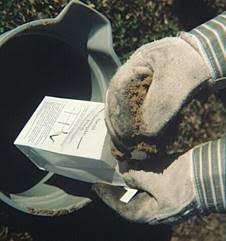Compost Your Garden NOW!
By David Wall, Mount Pleasant Master Gardener
I start to get antsy every January, wanting to have everything for my gardens ready and in place for the soon-to-be growing season, onions excepted, which were put in the ground I mid-late January. One of the biggest items every year is the soil. Have I improved it from last season without resorting to tilling? Is there enough food for the vegetables to use in growth and producing?
During the January/February time each year, for the last several years, I drive some 45 miles to a compost manufacturer and purchase, depending on my needs, anywhere from 1-7 cubic yards of high-quality compost with a pH of 5.5-6.5. The pH is critical, because compost can have a pH of up to 8.5, which won’t do your vegetables much good!
There are three home gardens (11 X2 3, 9 X 17, & 38 X 4) that welcome the compost. Depending on how much the underlying firewood, leaves, mulch and compost were used last season, 2-4” of new compost will be added, with 2” being the minimum.
Putting 2” of new compost provides several accomplishments. First, it provides a top cover that simply lays there undisturbed. There’s no telling how many weed seeds got into your garden last fell, and this top covering will help them to not germinate.
Now, when spring rains filter through this layer, they’ll pick up and pass along “food” to lower layers in the garden, thus making the food available to microorganisms who will, in turn, feed it to your vegetables. After a couple years, the need for fertilizers becomes less and less. I haven’t used fertilizers in these gardens for several years.
Last season in these gardens, okra was 10’ tall and cayenne peppers were 6’ tall. Both produced heavily, and the same for purple hull peas.
My crops get bigger each year, my weeding gets less and prepping the beds is easy as can be. water slowly seeps through the compost into the soil distributing this new wealth of food to the soil in a manageable way that it can be assimilated and used.
Each year the compost stratifies adding a new layer that becomes soil as it breaks down. Once this system has been in place for a couple of years you will notice that you need less and less fertilizer until you need none at all. The soil will get a beautiful rich color and will attract lots of worms and other wonderful beneficial insects. This soil will also hold water better as the organic material acts like a sponge keeping your moisture where it is needed, at the roots of the plants.
Weeding in a no till garden is a much less painful process. Less and less weeds will grow. Have you ever noticed that when you till up a bed in about two to three weeks you have a huge outgrowth of weeds. This is because you have given all the weed seeds that were waiting dormant in your soil the opportunity to germinate. This causes a huge outgrowth of weeds. In a no till system those seeds are dormant under the layers of compost and do not have the chance to cause issues. They will eventually be broke down as organic material in your healthy soil.
When you leave your soil alone and do not disturb it by tilling it each spring you allow the systems of mycorrhizal fungi and worms and other beneficial systems to continue their important work of brining water and nutrients to your plants. If you till them up they have to start over each year from a weaker point. Keeping your soil alive keeps it processing food into bioavailable vitamins and minerals.






